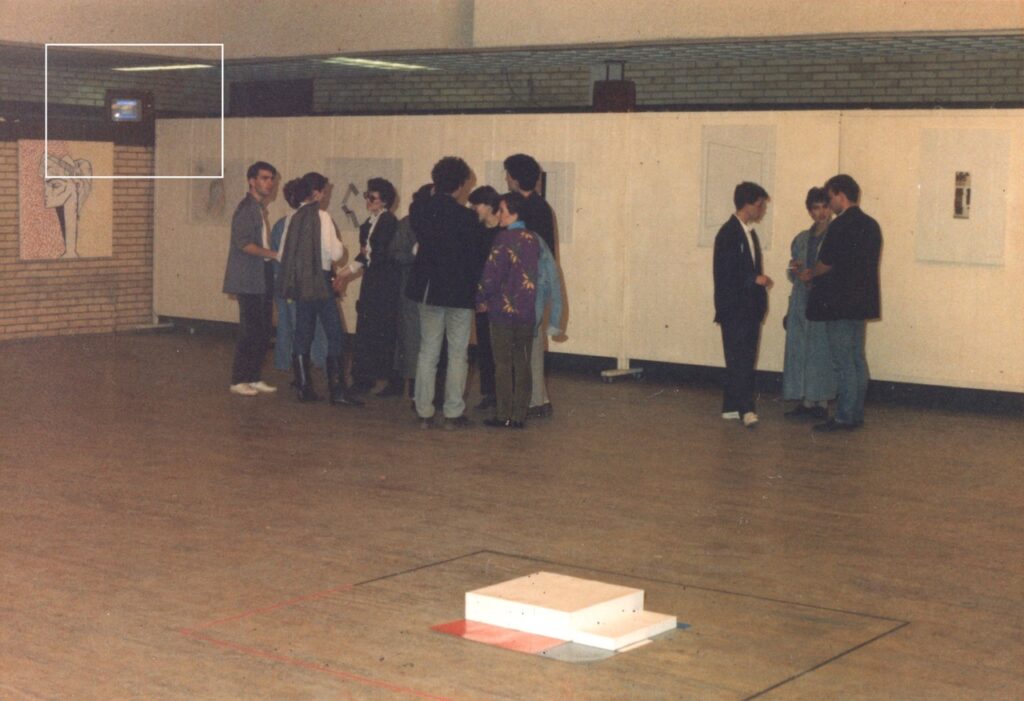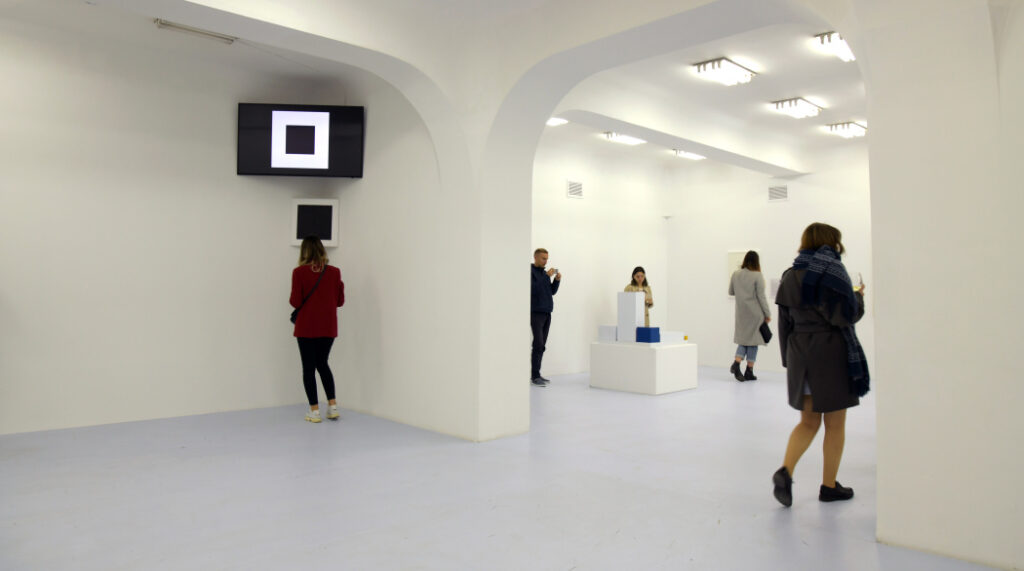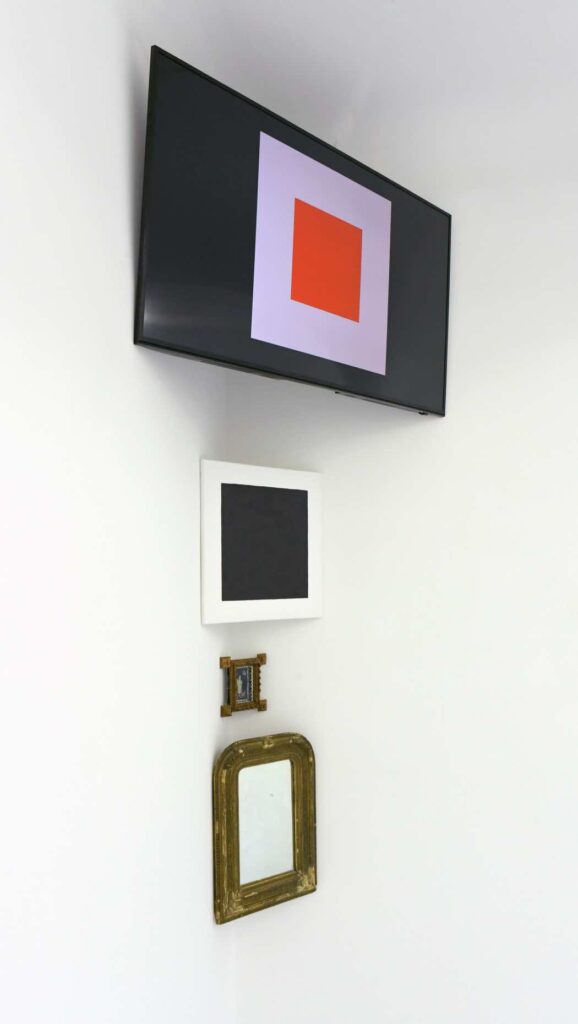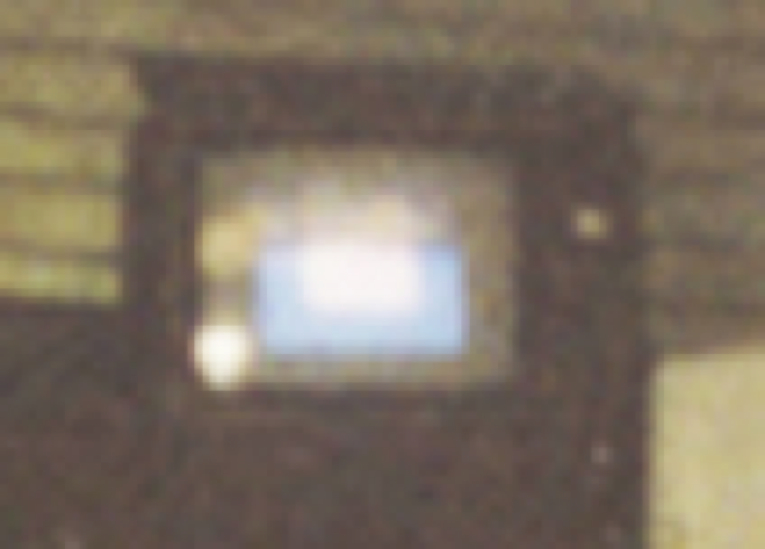The Shining Square, 1986, Video Installation, 4:43 min., FILOART
If one TV monitor is switched off, does it become a Black Cube, a Black Square on a black background or is it just a monitor without electricity?
The work of Kazimir Malevitch “Black Square” 1915 is one of the foundations of art history. It is a simple work, oil on canvas, a black square painted on a white background.
In 1987 FILOART presented a work (citation) similar to the “Black Square” but in a different medium. The title of this work was “Shining Square” (1986), and it’s a video installation programed on a computer Commodore 64, connected to a TV set and dis- played on the TV monitor. A square can be seen in this video, projected over another one. Every 5 seconds the square and the background change color, each image showing two-colored static pictures*. There are 25 pictures (combinations) of three colors – red, yellow, blue and black and white on the changing background.
One Square and its background are static, while the other changes its colors and background.
While one work, absorbs and reflects light the other transmits and shines.
The TV is a medium which deals with moving pictures and wakes up the illusion of the “third dimension” (which we imagine). On the other hand the “Shining Square” does the opposite. It uses the monitor screen as a school blackboard, where ground colors are presented like static examples in two dimensions.
Through different intensity of the basic colors on the TV screen, we see the colors and their nuances. RGB stands for the primary colors – red, green and blue and is used on every screen (monitor, TV). It is an additive color scheme. This means that, at maximum luminosity of all three colors, the visible color is white. If all three colors are turned off, the visible color is black.** How black is a black square and how white is its background? What is color? For some people corners symbolize infinity, in some religions corners are sacred. Some put “holy icons” in corners, others put pictures, reproductions, sculptures of Jesus, some place a Black Stone in the corner of a Black Cube (Kaaba). In the non-objective art exhibition: “The Last Futurist Exhibition of Paintings 0,10” in Petrograd 1915, Malevich placed the “Black Square” in the corner. Seventy years later, in the presentation This is not an Exhibition but the Opposite of it FILOART’s work, Shining Square was also placed in the corner. Did the monitor replace the religious icons and artworks (icons) to become a contemporary icon itself?
___________________________
*The human brain makes 14-16 fps (frames per second). For TV and film it’s 24 or 25 fps. Today we have systems with 30 fps.
**Black and white are strictly non-colors

“Boro e Ramizi” Prishtine


